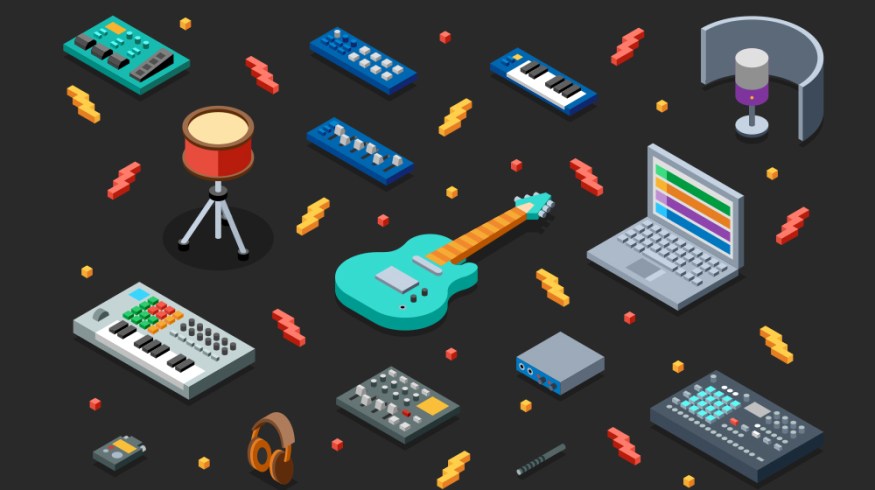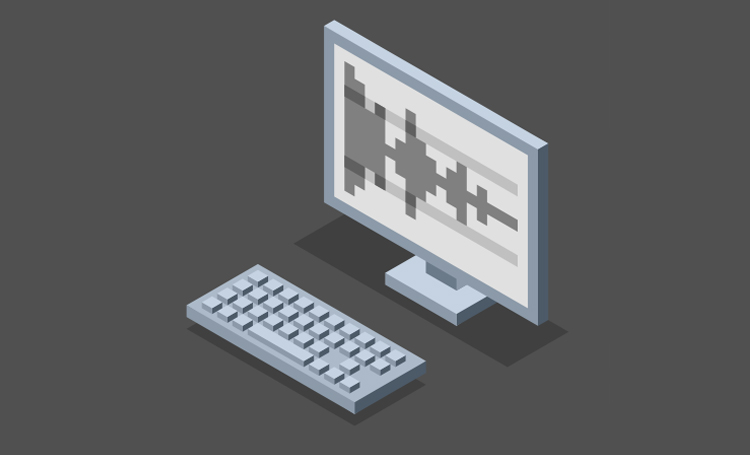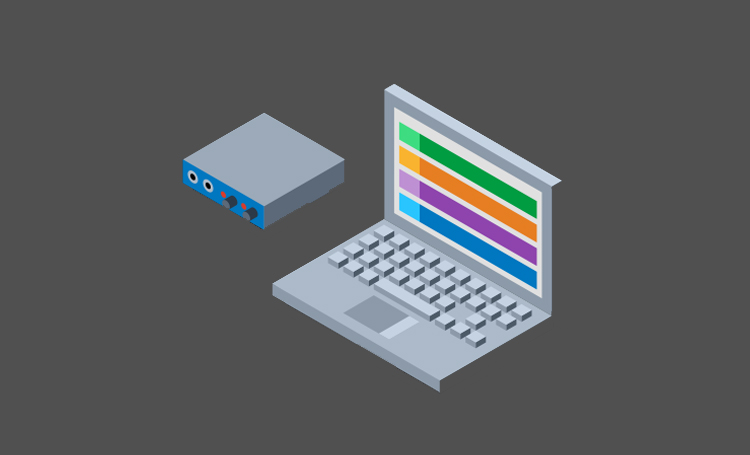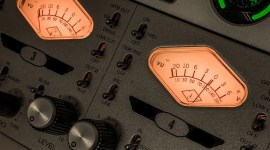
What Is Audio Compression?
Whether you compose music or edit sound for video, compression is the final sprinkle of fairy dust to make your project more polished. But why do we need it? How does compression work? Let’s dive in.
In any project where you are working with sound, audio compression is a process that provides balance among the entire mix. It may not be the most apparent part of the audio mix; however, it’s a fundamental task in the audio process. Here we’ll unpack the function of compression, and why and where you need it.
What is Compression?
Compressing audio evens the dynamic range between the loudest and softest parts in the mix. It narrows out the levels and, by doing so, allows the audio to sit more comfortably in the final mix without extreme peaks.
Leveling out the loud and quiet parts of the mix allows both to be heard more clearly. Adjusting the volume can only do so much. Therefore, compression allows for that overall balance.

As an example to help gauge what compression does, imagine recording a drum kit. Drums are loud and have an initial striking sound when the stick meets the drum’s skin then the sound fades off. That “hit” we hear appears on a digital representation of a sound wave as a transient.
The transients tend to be the loudest part of the signal. Applying compression allows us to hear the transients equally in context. It does so by lowering the peak levels, allowing the sustain of tone to be more present (while still staying punchy.)
Audio Compressing Dialogue
Compression is also an essential step in filmmaking. You may have a section of audio with various volumes, including a singular person speaking to a crowd and multiple applauses. Or, you may have dialogue that happens in a noisy room full of people.
The loudness of the sound environment will produce prominent peaks, which may be too loud for the mix. However, you can lose the quieter moments when turning the overall gain down. In this case, the solo speaker may get lost.
Compressing this audio will sort this problem out. A whisper and a shout in the same take are both graspable by the ear. By literally “compressing,” the dynamic range will keep that solo speaker from getting lost in the mix and keep sounding as natural as possible.
Ultimately, the aim is to ensure that the dialogue is easily heard to get the whole experience of the story. Straining to listen to what the character is saying isn’t a good look.
Parameters of Compression
So the question is, how do we use it? Compression has a few parameters that help control how the audio behaves to reduce the signal’s volume.
Threshold
First, we will look at the threshold. This is the starting point of the compressing process. Adjusting the threshold, measured in decibels (dB), sets the level at which the compression activates. When the signal goes above the threshold, only then will the signal be compressed.
The lower the threshold, the more the signal will be compressed. A good starting point is to see what level the peaks are at on the dB meter. This gives a good indication as to what to set the threshold to.
Ratio
Next up is the ratio. This determines how much the volume is reduced once it has passed the threshold.
To help understand how it works, let’s say we set the ratio 2:1. If the signal exceeds the threshold by 2dB, it will be attenuated to 1dB above the threshold. Or, if the signal exceeds 6dB, it will be reduced to 3dB above the threshold. If the threshold is set to -10dB (so anything exceeding -10dB will be compressed), and the ratio is 2:1 when the signal goes above -10dB, it will be attenuated to only 5dB above the threshold rather than 10dB.
Having a ratio of 1:1 means that there’s no attenuation, but a ratio of 20:1 is extreme. At this point, having a strong ratio would be considered as Limiting. This doesn’t let any signal pass the threshold.
Attack and Release
Now that we have the peaks of the signal taken care of, we need to consider the volume after the signal has been compressed. This is where Attack and Release time come into play. These parameters are presented in milliseconds and can add shape to the mix, and are all dependent on what sound you are working with.
The attack time determines how long it takes for the signal to compress after going over the threshold. A quicker attack time suits more belligerent transients (such as a picked bass guitar). Meanwhile, a slower attack time will compress the sound’s sustain.
The release is the opposite: how long it takes for the compressed signal to return to its original state. Once it goes below the threshold, the release time will dictate how long it takes for the signal to return to its normal volume. Having a quick release time can make it sound unnatural. A slower release time will keep the compression going and may be overkill.
A general tip to consider when using attack and release on voice: the shorter the attack and release, the better! On speaking vocals, it’s best for the compression to kick in immediately, and to not keep the compression attached after the voice has stopped talking. You may not need to have any and set it to 0 m/s.

Makeup Gain
Sometimes adjusting these parameters may decrease the overall volume, and you may want to “make up” for some of that lost volume.
The Makeup parameter will allow you to add more gain to the audio. Many plugins have an auto gain button. However, it’s best to avoid it as this could make it too loud and not to your liking.
Manually adding the makeup gain gives you more control. If the volume is reduced by 5dB after compression, you can set the makeup to 5dB. As we are only reducing the loudest peaks of the signal, we can still increase the overall volume.
Knee
A bonus parameter to include is the Knee. This control determines how the compressor responds to the signal around the threshold.
A hard knee has a more distinct trigger, so no compression will happen until the signal surpasses the threshold. A soft knee is more gradual. It applies compression more smoothly when approaching and passing the threshold.
The compression happens just before the threshold, which makes it sound smoother. This can be further enhanced by adjusting the attack and release time for extra smoothness.
Not all software has a knee control, but if you come across it, now you know how it works!
This video is an excellent example of using compression on speech audio and includes some helpful tips on using these parameters.
Have a go yourself!
While there may be a lot to unpack with compression, playing around with it yourself is the best way to attack it. Now that you know the components of compression, you can apply them to your projects.
Compression can be a lifesaver when balancing out dynamics in any situation, whether it’s on dialogue, music, or sound effects. Compression is there to save the day if you don’t want to turn down the overall volume due to much louder moments peaking too much.
All images via Sashatigar.
For more on audio, check out these articles:





